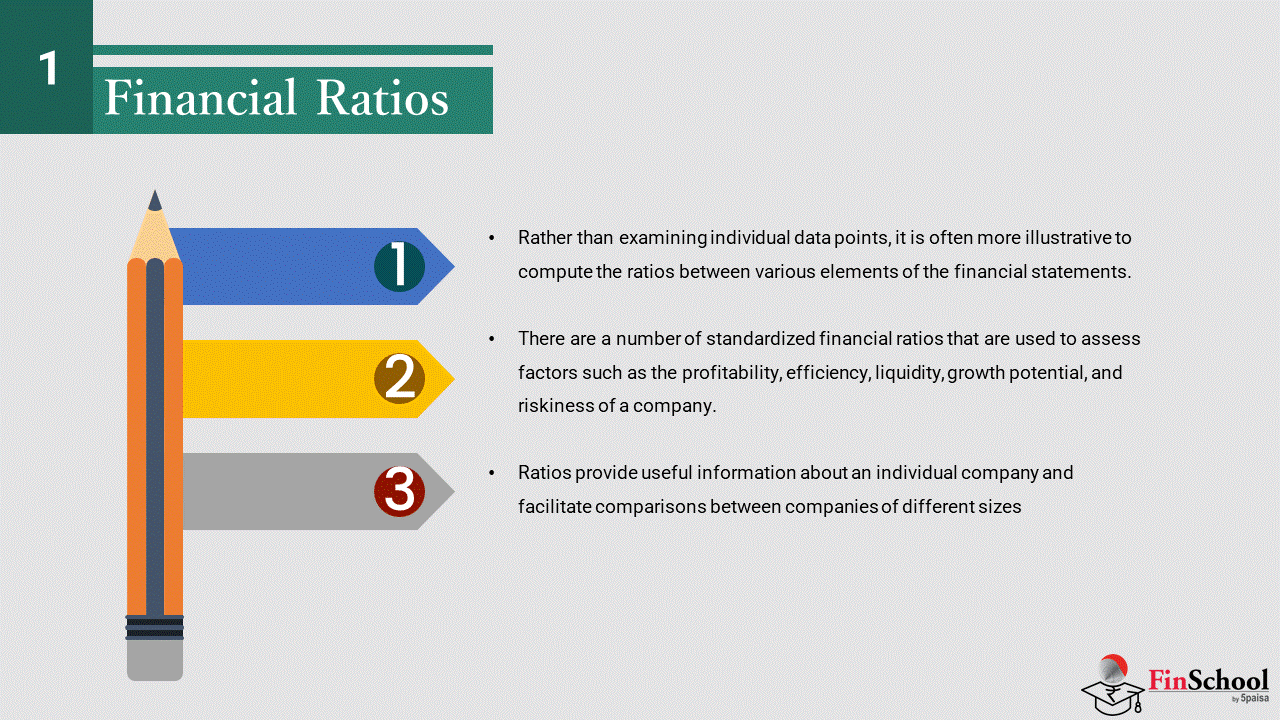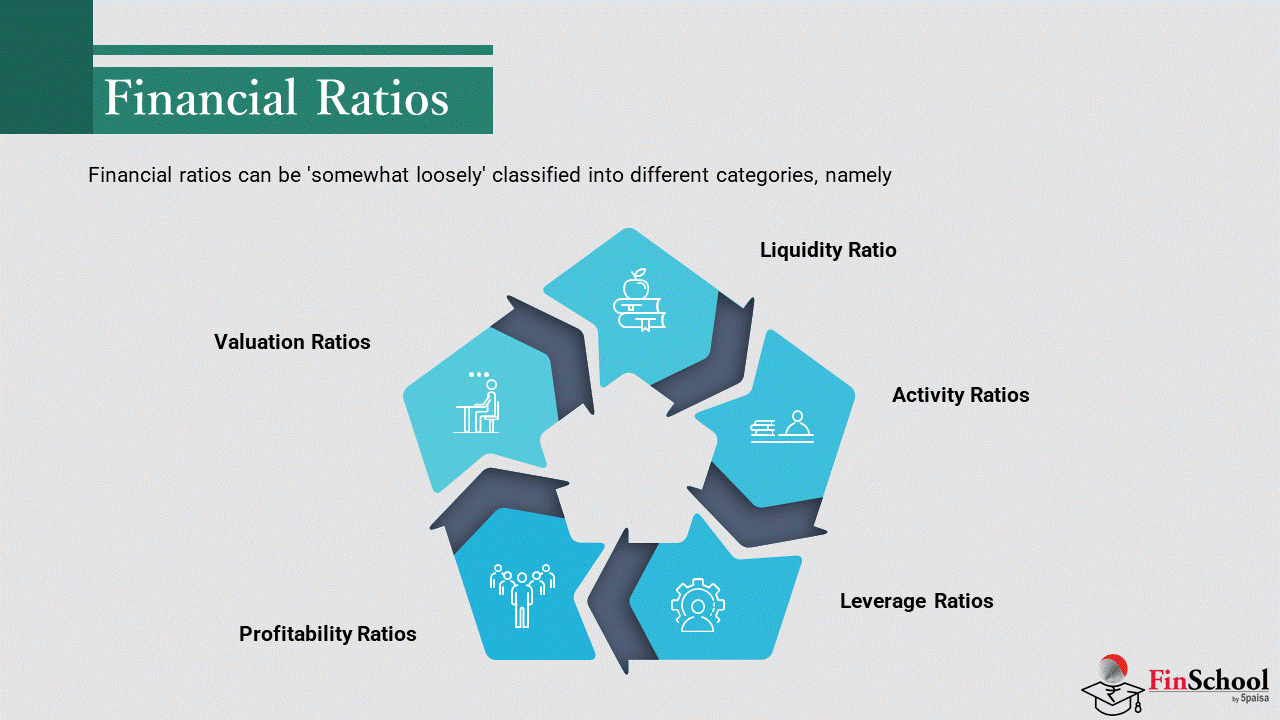- Introduction to Fundamental Analysis
- Know Steps & Economic Analysis In Fundamental Analysis
- Understanding Basic Terms In Fundamental Analysis
- Understanding Financial Statements in Stock Market
- Understanding Stock Balance Sheet in Stock Market
- Understanding Income Statements in Stock Market
- Understanding Financial Ratios for Stock Analysis
- Understanding Liquidity Ratio in Stock Market
- Understanding Activity Ratio in Stock Markets
- Understanding Risk/Leverage Ratios In Stock Market
- Understanding Profitability Ratios in Stock Market
- Understanding Valuation Ratios in Stock Market
- Study
- Slides
- Videos
8.1 Financial Ratios

Rather than examining individual data points, it is often more illustrative to compute the ratios between various elements of the financial statements. There are a number of standardized financial ratios that are used to assess factors such as the profitability, efficiency, liquidity, growth potential, and riskiness of a company. Ratios provide useful information about an individual company and facilitate comparisons between companies of different sizes.
On a standalone basis, the financial ratio of a company conveys very little information. For instance, assume Amararaja Batteries has a profit margin of 9%, how useful do you think this information is? Well, not much, really. 9% profit margin is good, but how would I know if it is the best?
However, assume you figure out Exide Industries profit margin is 5.3%. Now, as we are comparing two similar companies, comparing the profitability makes sense. Clearly, Amararaja seems to be a more profitable company between the two. Thus, the ratio makes sense only when you compare the ratio with another company of a similar size or when you look into the financial ratio trend. This means that once the ratio is computed, the ratio must be analyzed (either by comparison or tracking the ratio’s historical trend) to get the best possible inference.
Financial ratios can be ‘somewhat loosely’ classified into different categories, namely
-
Liquidity Ratio
-
Activity Ratios
-
Leverage Ratios
-
Profitability Ratios
-
Valuation Ratios





